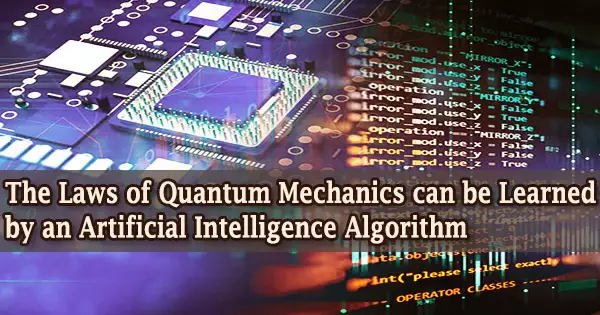The electrical characteristics of molecules and molecular wave functions can be predicted using artificial intelligence (AI). A team of researchers from the University of Warwick, the Technical University of Berlin, and the University of Luxembourg discovered a novel AI technology that might be used to speed up the design of medicinal compounds or new materials.
Artificial Intelligence (AI) is the study of teaching computers to think and act in the same way as humans do. It has been possible to achieve this since the invention of complicated Artificial Intelligence Algorithms by constructing machines and robots that are used in a broad range of industries, including agriculture, healthcare, robotics, marketing, business analytics, and many more.
“Algorithm” is a word that one hears used much more frequently than in the past. One of the reasons is that scientists have learned that computers can learn on their own if given a few simple instructions. That’s really all that algorithms are mathematical instructions.
Artificial intelligence and machine learning algorithms are frequently used to forecast our purchase habits as well as detect our faces and handwriting. Artificial Intelligence is establishing itself as a critical instrument for scientific discoveries in scientific study.

In chemistry, artificial intelligence has proven to be useful in predicting the results of experiments or simulations of quantum systems. To do this, AI must be able to incorporate the fundamental rules of physics in a systematic manner.
Quantum mechanics (QM) evolved over decades, starting as a series of contentious mathematical explanations for experiments that classical physics couldn’t explain. The fact that Bohr employed an ad hoc hybrid of classical Newtonian dynamics for the orbits and certain quantum postulates to arrive at the energy levels of atomic electrons had been criticized by theorists.
This has been a joint three-year effort, which required computer science know-how to develop an artificial intelligence algorithm flexible enough to capture the shape and behavior of wave functions, but also chemistry and physics know-how to process and represent quantum chemical data in a form that is manageable for the algorithm.
Dr. Reinhard Maurer
A deep machine learning algorithm developed by an interdisciplinary team of chemists, physicists, and computer scientists led by the University of Warwick and including the Technical University of Berlin and the University of Luxembourg can predict the quantum states of molecules, also known as wave functions, which determine all properties of molecules.
According to their research ‘Unifying machine learning and quantum chemistry using a deep neural network for molecular wave functions’ published in Nature Communications, the AI does this by learning to solve basic equations of quantum physics.
Solving these equations in the traditional approach necessitates a large amount of high-performance computer resources (months of processing time), which is generally the bottleneck in the development of new purpose-built molecules for medicinal and industrial uses. On a laptop or smartphone, the newly built AI program can provide correct forecasts in seconds.
In general, an algorithm takes some input and produces an output using mathematics and logic. An Artificial Intelligence Algorithm, on the other hand, uses a mix of both inputs and outputs at the same time to “learn” the data and create outputs when given fresh inputs.
Dr. Reinhard Maurer from the Department of Chemistry at the University of Warwick comments:
“This has been a joint three-year effort, which required computer science know-how to develop an artificial intelligence algorithm flexible enough to capture the shape and behavior of wave functions, but also chemistry and physics know-how to process and represent quantum chemical data in a form that is manageable for the algorithm.”
The group came together during a three-month multidisciplinary fellowship program at IPAM (UCLA) focused on machine learning in quantum physics. Scientists established a coherent theory of the atom that explained its fundamental structure and interactions in just a few years.
New data suggesting that light and matter contain both wave and particle qualities at the atomic and subatomic levels was crucial to the theory’s development. Prof Dr Klaus Robert-Muller from the Institute of Software Engineering and Theoretical Computer Science at the Technical University of Berlin adds:
“This interdisciplinary work is an important progress as it shows that, AI methods can efficiently perform the most difficult aspects of quantum molecular simulations. Within the next few years, AI methods will establish themselves as an essential part of the discovery process in computational chemistry and molecular physics.”
Professor Dr. Alexandre Tkatchenko from the Department of Physics and Materials Research at the University of Luxembourg concludes:
“This work enables a new level of compound design where both electronic and structural properties of a molecule can be tuned simultaneously to achieve desired application criteria.”
Algorithms, like mathematical equations, are neither good nor bad. Algorithms, on the other hand, have clearly been utilized by individuals with both good and harmful motives. Machines may learn in a variety of ways, depending on the data collection and the issue that has to be solved. There will be blunders as technology advances, but it’s vital to remember that they’re simply tools.
















